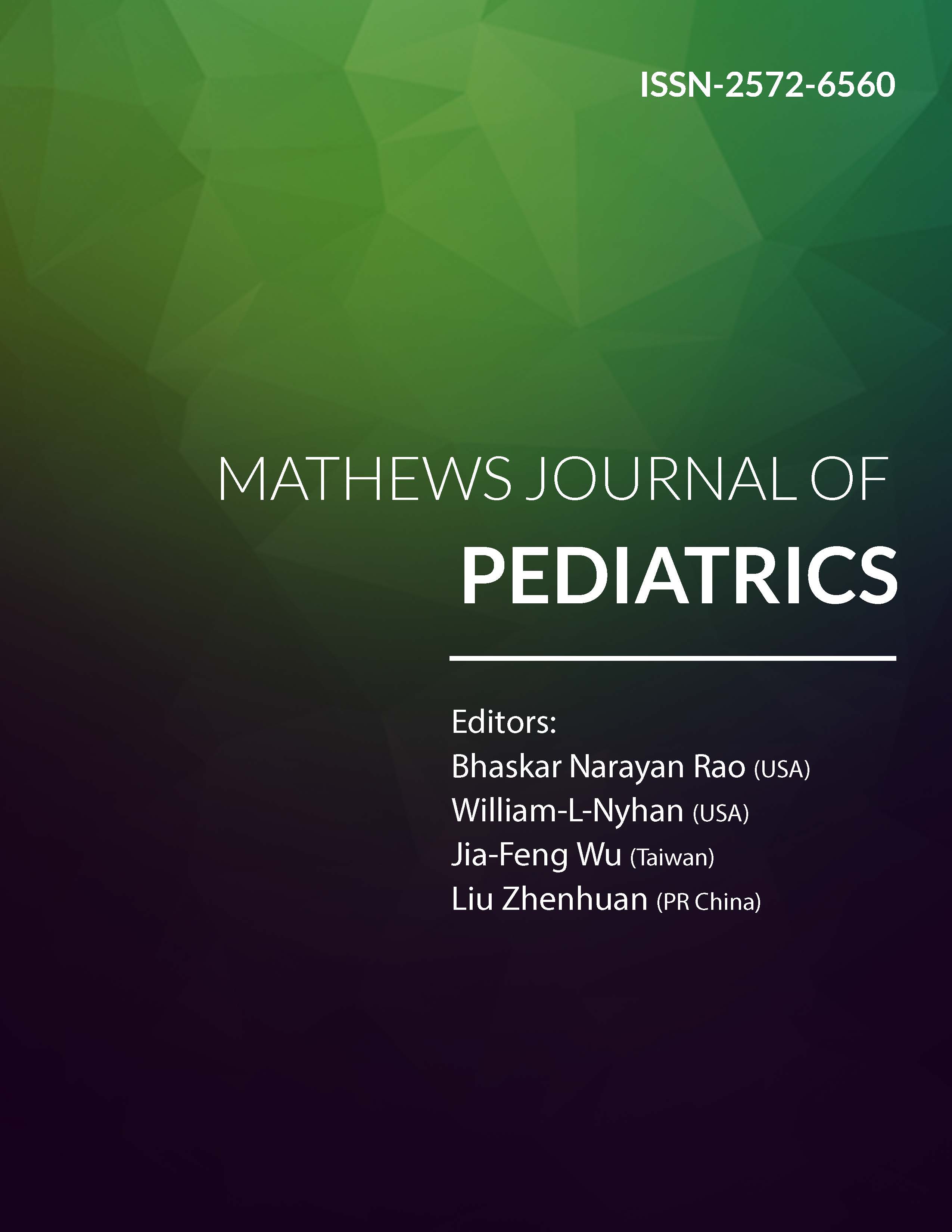
Information Links
Previous Issues Volume 1, Issue 1 - 2016
3 Month Old Female with Prolonged Fever, Pulmonary Nodules, and a Rare Diagnosis of Infantile Takayasu Arteritis: A Multidisciplinary Collaboration
David Leone1, Caitlin Zaner2, Lauren M Cohee3, Jason W Custer4
1University of Illinois at Chicago, Department of Pediatrics (m/c 856), Chicago, IL 60612, USA.
2University of Maryland, Department of Pediatrics Baltimore, MD 21201, USA.
3University of Maryland, Department of Pediatrics, Infectious Disease, 820 Baltimore, MD 21201, USA.
4University of Maryland, Department of Pediatrics, Pediatric Critical Care, 110 S. Paca St., 8th Floor, Ste. 820 Baltimore, MD 21201,USA.
Corresponding Author:David Leone, University of Illinois at Chicago, Department of Pediatrics (m/c 856), 840 S Wood Street (14th floor), Chicago, IL 60612, USA, Tel: 201-919-1759; E-Mail: [email protected]
Received Date: 12 May 2016
Accepted Date: 13 Jun 2016
Published Date: 21 Jun 2016
Copyright © 2016 Leone D
Citation: Leone D, Zaner C, Cohee LM and Custer JW. (2016). 3 Month Old Female with Prolonged Fever, Pulmonary Nodules, and a Rare Diagnosis of Infantile Takayasu Arteritis: A Multidisciplinary Collaboration. Mathews J Pediatr. 1(1): 001.
Background: Takayasu Arteritis is a systemic inflammatory disease that generally affects the great blood vessels. It has predominately been described in the Asian population and primarily affects females, although it ranges all ethnicities and can occur in both males and females. In the pediatric population this condition is exceptionally rare, and is only recently being described more in depth in the literature.
Case Presentation: A three month old Hispanic female presented with three days of high fever, progressive respiratory distress, lethargy, poor feeding, abdominal distension, and a maculopapular rash. Initial laboratory evaluation revealed transaminitis, anemia, and leukocytosis with an elevated immature neutrophil percentage. Infectious disease evaluation was only positive for enterovirus/rhinovirus via polymerase chain reaction from a nasopharyngeal swab. Early chest radiography showed changes consistent with viral pneumonitis.
Empiric antibiotics were discontinued after 48 hours after bacterial cultures returned negative; however, the patient continued to have significant respiratory distress. Concerns for Kawasaki vasculitis prompted treatment of intravenous immunoglobulin; however she remained febrile. Computerized tomography of the chest and abdomen ultimately revealed multifocal pulmonary nodules and hepatomegaly. These nodules were later biopsied revealing only inflammatory tissue with no microbial pathogens isolated. The patient continued to have persistent waxing and waning fevers despite antipyretic therapy and required high flow oxygen support for respiratory distress.
A repeat echocardiogram was done three weeks into her course that demonstrated giant coronary artery aneurysms. Further magnetic resonance imaging showed large vessel aneurysms and the patients presentation fit all diagnostic criteria for Infantile Takayasu Arteritis.
Conclusions: This case teaches a lesson that when a patients course follows an atypical or unexpected pattern it can be especially important to broaden the differential diagnosis to encompass rarer conditions that may have initially been unsuspected, and to involve other colleagues early as they can approach a case from a different and new perspective. As a result of the combined rationale and expertise of many medical professionals, this case revealed an unusual presentation of an extremely rare disorder, and this highlights the components of a true interdisciplinary success.
Infantile Takayasu Arteritis; Childhood Takayasu Arteritis; Pulmonary Nodules; Coronary Artery Aneurysms; Subclavian Artery Aneurysms; Aortitis; Infliximab.
ABBREVIATIONS PRES: Paediatric Rheumatology European Society; EULAR: European League against Rheumatism; PRINTO: Paediatric Rheumatology International Trials Organization; AHA: American Heart Association; TA: Takayasu Arteritis; i-TA: Infantile Takayasu Arteritis; CSF: Cerebrospinal Fluid; PICU: Pediatric Intensive Care Unit; NICU: Neonatal Intensive Care Unit; CT: Computed Tomography; ESR: Erythrocyte Sedimentation Rate; CRP: C-Reactive Protein; MRI: Magnetic Resonance Imaging; AST: Aspartate Aminotransferase; AST: Alanine Aminotransferase; PCR: Polymerase Chain Reaction; IVIG: Intravenous Immunoglobulin.